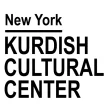Zehra Doğan, painter and journalist
 Zehra Doğan, born in Diyarbakir in 1989, is a Kurdish artist and journalist. In 2016-17, after talks between Ankara and the PKK broke down, the AKP government used armed forces to attack Kurdish cities. At that time Doğan was staying in Nusaybin, a mostly Kurdish city in Mardin province, on the border with Syria. One of her watercolors showed the city’s destruction, its smoldering ruins draped with Turkish flags. She posted it on social media.
Zehra Doğan, born in Diyarbakir in 1989, is a Kurdish artist and journalist. In 2016-17, after talks between Ankara and the PKK broke down, the AKP government used armed forces to attack Kurdish cities. At that time Doğan was staying in Nusaybin, a mostly Kurdish city in Mardin province, on the border with Syria. One of her watercolors showed the city’s destruction, its smoldering ruins draped with Turkish flags. She posted it on social media.
For that painting, the Turkish state charged her with making “terrorist propaganda.” In March 2017, the Mardin second high criminal court sentenced her to two years and ten months in prison. She would spend a total of 25 months in Turkish prisons, in Mardin, Tarsus, and Diyarbakir.
While Doğan was in prison, she has said, “I had two choices: either to accept it, and complain, or to try to continue with my art as a means of resistance.” She chose to continue making art, but lacking canvases, she used newspaper, cardboard, scarves, and scraps of clothing instead. And lacking paint, she crushed herbs to make green pigment, used kale for purple, and applied pomegranate juice or menstrual blood for red. A blue ballpoint pen, cigarette ashes, coffee grounds, black pepper, and turmeric filled out her palette.
Using these tools, Doğan created more than 300 works, variously representing Kurdish women’s resistance, the political silencing of Kurdish women, and the hardships of physical confinement. Many of them include handwritten Kurdish words.
Images of women’s faces and bodies abound in her work. One piece, titled Womanhood, features a long-sleeved white dress, a wide stained skirt. Ghostly, big-eyed faces, outlined black and adorned with Kurdish-style earrings, stare outward. Other pieces show women surrounded by traditional Kurdish clothing and jewelry, their hands and feet bound in rope made from human hair, their faces twisted in pain.

Several pieces represent the Shahmeran, the half woman and half snake from Kurdish mythology. The Pain of Shahmeran depicts a bound Shahmeran wearing a traditional Kurdish red shawl. Her body is contorted and she is giving multiple births. Other paintings depict her menstruating.
In Ez Zehra (I, Zehra), a human figure bends forward with wings on its back, in an image created from feathers, hair and menstrual blood.
Doğan’s works were smuggled out of prison, concealed as dirty laundry. Once they reached the outside, they attracted international attention and acclaim. Her work was shown at the Berlin Biennial. In 2018, the street artist Banksy featured her in a major public piece expressing concern over her imprisonment.
Doğan was released in early 2019. At the age of thirty-one, she wanted to prove herself as an artist in Turkey. A small artspace in Istanbul’s Pera district called Kiraathane24 gave her a show, called “Not Approved”; but no other galleries invited her to exhibit. “My country hasn’t accepted me,” she has said.
Feeling threatened in Turkey as an artist, a woman, a feminist, and a Kurd, Doğan left her homeland, despite her love for it. She currently lives in Berlin and has exhibited her work frequently in Europe.
As a feminist, Doğan is committed to fighting patriarchy. She affirms the role of art in political resistance: “Kurds have been fighting for our rights for 100 years now. Some choose to fight with weapons. We need to learn to fight through other means. For me, that is art.” She encourages young Kurds to prioritize cultural resistance and has organized workshops for young Kurdish artists.
Zehra Doğan’s website.
Savan Abdulrahman, “An interview with Zehra Doğan: I have made art my life,” MedyaNews, January 23, 2021.
Matt Hanson, “Zehra Doğa Was Jailed for Her Political Art. After a Traumatic Sentence, the Kurdish Artist Has a New Show—With Work Smuggled From Prison.” ArtNet News, November 3, 2020.
Shilan Fuad Hussain, “Armed with Paintbrushes: Kurdish Women Artists Fighting for Equality,” Washington Institute for Near East Policy, August 4, 2022.
Beth McKernan, “Art as Resistance: Exiled Kurdish Artist’s Daring Istanbul Show,” Guardian, November 8, 2020.
















